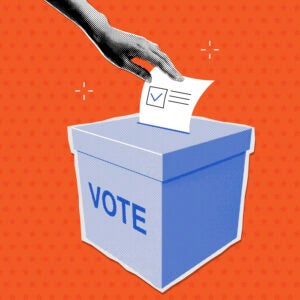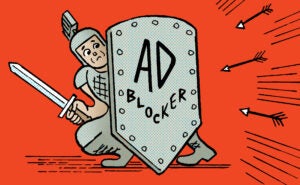 “The Sell Sider” is a column written by the sell side of the digital media community.
“The Sell Sider” is a column written by the sell side of the digital media community.
Today’s column is written by Grant Brown, co-founder and chief strategy officer at Rant.
March Madness has officially begun. For brand marketers, the NCAA men’s Division I basketball championship tournament is a billion-dollar lollapalooza.
Behind the NFL playoffs, March Madness has become the second most popular sports showcase for advertisers. Fans from all walks of life immerse themselves in experiences across all media, ranging from in-stadium branded promotions and TV commercials to streaming desktop videos and in-feed native ads on mobile devices. With a forecasted loss in productivity at $1.9 billion, advertisers have an extremely captive audience from March 16 through April 6.
The uptick in fan engagement presents limitless opportunities for brands to leverage offline and online data to create a tightly integrated omnichannel program. Digital publishers can take on more proactive roles in the campaign development process to support marketers’ goals and objectives. Here’s how content providers can enhance marketers’ growing experiential marketing investments and support future omnichannel efforts around major sporting events.
Help Marketers Cross-Pollinate Offline-Online Data
Brands use various sets of offline and online data to build comprehensive audience segments and consumer profiles, pulling from loyalty program information, historical purchases, demographic and behavioral data and motivation-based insights. A millennial Pepsi consumer, for example, skews heavily toward brands that give them a sense of personal freedom.
Publishers with experience working with premium brands are in a prime position to consult brand strategists and media planners on omnichannel strategies. From exposure to hundreds of media briefs that cite disparate streams of data, publishers can advise brands on how best to reconcile offline and online information into a cohesive view of the consumer. And as publishers’ website and consumer engagement analytics become more sophisticated, they can share additional insights on a brand’s target audiences, such as what topics they’re passionate about or what drives purchase decisions, to further inform cross-channel marketing investments.
For example, let’s say Mountain Dew is interested in “on-stage” presence during the half-time show at the University of Oregon vs. Oklahoma State University game this Friday night. While Mountain Dew’s marketers know their target audience is males 18 to 34 years old with household incomes from $50,000 to $100,000, a travel publisher may also know that Mountain Dew drinkers, based on pages they visited on the travel site, highly skew toward active outdoor activities, such as hiking and surfing. By sharing this information, publishers could help Mountain Dew design a shoot-out contest where winners receive tickets to Hawaii or another active destination.
This offline event can be combined with a comprehensive targeted digital banner, branded content and video sponsorship to further increase Mountain Dew’s visibility before and after the game. The publisher can tap relevant subscribers via pre-show emails to pique halftime interest, give away game tickets through Mountain Dew branded content and promote high-quality clips produced during the game in post-show pre-roll videos.
As this example demonstrates, the travel publisher can help Mountain Dew create a robust omnichannel strategy by cross-pollinating the brand’s offline intelligence with the publisher’s online information and subscriber database.
Partner With Experiential Experts
To make it easy for marketers to pursue data-driven programs, publishers can explore partnerships with experiential marketing agencies. They not only specialize in creative programs that connect consumers with brands across various physical touch points, but also understand how to measure experiential activation from brand lift to sales conversions.
Last year, Shell Lubricants partnered with Nintendo and used agency partners – JWT Atlanta, Coyne PR and Mediacom ESP, a sports and entertainment consultancy – to launch a new Pennzoil brand at South by Southwest (SXSW). The innovative launch resulted in 90% increased awareness outside of Pennzoil’s typical automotive press, nearly 1 billion impressions and sales that were comparable to a $2 million ad but at a lower cost. Automotive or millennial heavy publishers could have further enhanced consumer engagement by extending Pennzoil’s SXSW’s physical presence into their content-rich digital environments and mobile platforms.
Extend Consumer Engagement Through More Interactive Solutions
The industry is in flux, with advertising dollars being directed in new directions. In a Booz & Company study, for example, advertisers reported that in the next two years they planned to shift their marketing mix toward mobile, social media and digital ads on retailer sites. Furthermore, Magna Global forecasted that this year TV will get a smaller piece of the pie, citing a 2.9% decline in revenue, while digital media spend will jump 15%.
To capitalize on shifting revenue opportunities during high-value sporting events, publishers must make sure they are prepared to supply changing demands. This includes the ability to offer bold mobile advertising solutions, rich content experiences on a modernized site and advanced analytics to demonstrate consumer engagement.
March Madness presents an exciting time for marketers as a “cross-platform juggernaut.” As brands plan their March Madness strategies, publishers can ramp up their roles as important consultative partners in strategic omnichannel experiential marketing discussions.
By working together, publishers can help brands stay relevant in an increasingly noisy and competitive landscape for consumer attention during major sporting events.
Follow Grant Brown (@grantrbrown), Rant (@RantMN) and AdExchanger (@adexchanger) on Twitter.











